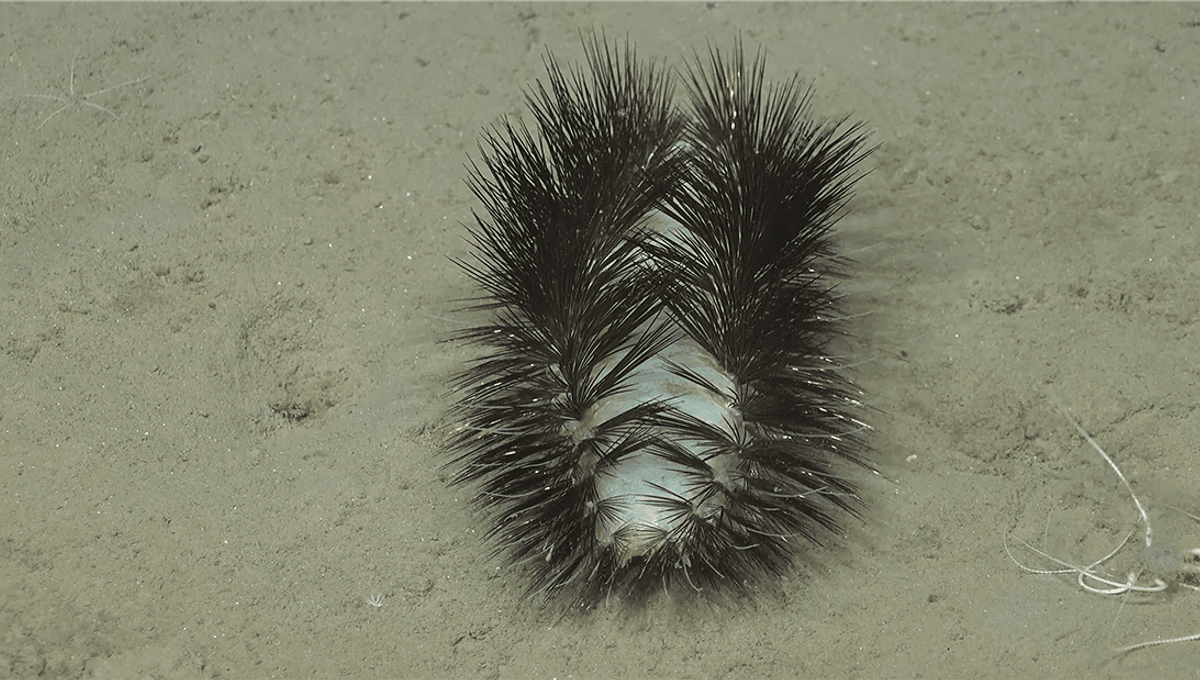
The deep sea is home to a lot of weird creatures. Some are brand new species living in the midnight zone, while others are recorded visiting the depths of the ocean in something of a surprising move. The deep sea gives rise to all sorts of adaptations and in the case of this recently recorded species, ended up making something akin to a deep-sea disco ball.
The team at Schmidt Ocean Institute were using their 3,200-kilogram (7,055-pound) remotely operated vehicle (ROV) SuBastian off the coast of Chile when the ROV captured footage of an unusual creature roaming across the sea floor. With black bristles that sparkle in the light from the submersible, the creature resembles a disco caterpillar making its way along while other creatures leap out of the way.
The disco caterpillar is actually a polychaete, a type of deep-sea worm known as a bristle worm, for obvious reasons. There are around 13,000 species of polychaete that live in marine ecosystems all across the world. These species include everything from the bloodworms (shudder) to the downright ridiculous but aptly named pigbutt worm.
“Each body segment has a pair of fleshy protrusions called parapodia covered in bristles called chaetae. Some worms are bioluminescent, but this sassy sparkler has protein structures in the bristles that make them iridescent,” Schmidt Ocean explained on Instagram on November 4.
Some polychaetes form symbiotic relationships with bacteria and can survive the extremely high-temperature differences found on hydrothermal vents. Other polychaetes live on a diet of plankton and marine snow that falls from higher up in the ocean to the sea floor. As such they play an important role in the marine ecosystem cleaning up detritus at the bottom of the sea.
The polychaete was seen as part of the #ChileMargin2024 mission. This is a 55-day mission that will see the team exploring the submarine canyons along the Nazca plate. Off the west coast of Chile, the continental shelf drops steeply into the Pacific Ocean and runs the entire length of South America.
The team plans to investigate hydrothermal vents and hydrocarbon seeps along this area that have never previously been visited by a scientific ROV.
Source Link: Watch A Deep-Sea "Disco Worm" Sparkle Off The Coast Of Chile